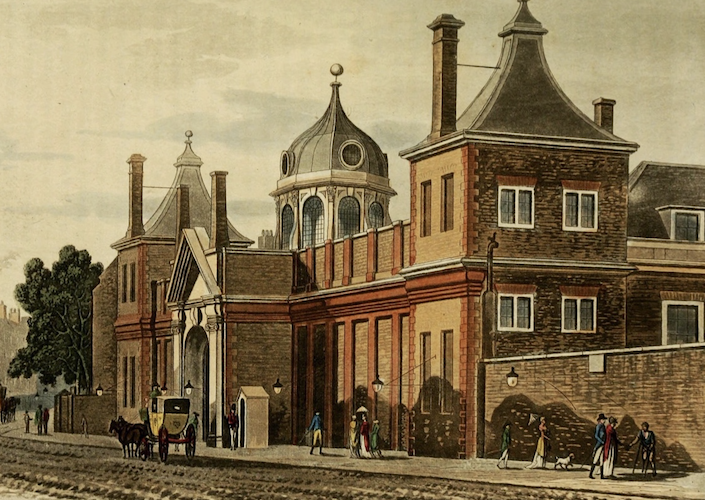The picture is of the British Museum. Not the one we know today, but its pioneering predecessor, Montagu House, which, for nearly 100 years, housed the amazing collections which three benefactors – Sir Hans Sloane, Sir Robert Cotton and the Earl of Oxford – gathered from around the world, creating a history of the planet in thousands of artefacts.
From its inception in 1753 the British Museum was dedicated to providing free access “to all studious and curious”, though as late as 1836 the principal librarian defended closure of the museum at weekends “to keep out the more vulgar class, such as sailors from the dockyards and girls whom they might bring with them”.
By a distance the grandest mansion in London of its time, Montagu House was sold by the second Duke of Montagu after he had moved to Whitehall. It was built on the site of an earlier Montagu House designed in 1675 by the polymath Robert Hooke who, when he wasn’t arguing with Isaac Newton about the inverse square law, was mainly responsible for the design of the Monument and the Bedlam mental hospital.
Opened to the public in 1759, it was situated Great Russell Street in exactly the same place as today’s British Museum, only a few hundred yards from the house of Sloane, the most important of the three benefactors. His house was already a museum, albeit not open to the public, showcasing most of his collection of 70,000 books and manuscripts, not to mention an even bigger number of objects and plants from his herbarium. The other two founding benefactions came from Cotton’s priceless mediaeval manuscripts (including the only copy of Beowulf), plus tens of thousands of books and manuscripts owned by the Earl.
The directors of the museum, meeting at the former Cockpit in Whitehall in the year the museum opened, turned down a number of alternative venues. These included what is now Buckingham Palace – too expensive at £30,000 and, would you believe it, considered to be in an inconvenient location – in favour of what was then a little-known mansion in Bloomsbury.
Neither the government nor the king, George II, was keen on the idea of such a museum. It only happened because Parliament – and all credit to it – took the matter into its own hands and passed a law in order to create it, which the reluctant George assented to. The museum quickly outgrew its original home. It was augmented with new buildings, and by 1845 the Montagu House part had been completely demolished. But the museum went on to become one of the wonders of the modern world, attracting over six million visitors a year to make it one of the top five museums on the planet in terms of visitors.
One of its lesser known features is that it actually contains remains of the original seven wonders of the world, including impressive parts of the Mausoleum at Halicarnassus, the Temple of Artemis and a tiny bit of the Pyramids. If you believe recent research that the Hanging Gardens of Babylon were actually at Nineveh, that makes a fourth.
The origins of the British Museum also have a dark side, one that is slowly coming to light as Britain starts to come to terms with the consequences of the hideous slave trade. Sir Hans Sloane himself had first hand knowledge of slavery. In 1687 he sailed for Jamaica as physician to the colony’s new Governor, the Duke of Albemarle and acted as surgeon in the plantations.
In 1695 he married Elizabeth Rose, widow of slave owner Fulke Rose, whose plantations brought substantial wealth, which greatly helped to finance Sloane’s acquisitions. That is a different avenue of Lost London that we will be hearing a lot more about in future.
All previous instalments of Vic Keegan’s Lost London can be found here.
OnLondon.co.uk exists to provide fair, thorough, and resolutely anti-populist news, comment and analysis about the UK’s capital city. It now depends more than ever on donations from readers. Give £5 a month or £50 a year and you will receive the On London Extra Thursday email, which rounds up London news, views and information from a wide range of sources. Click here to donate via Donorbox or contact davehillonlondon@gmail.com. Thanks.

